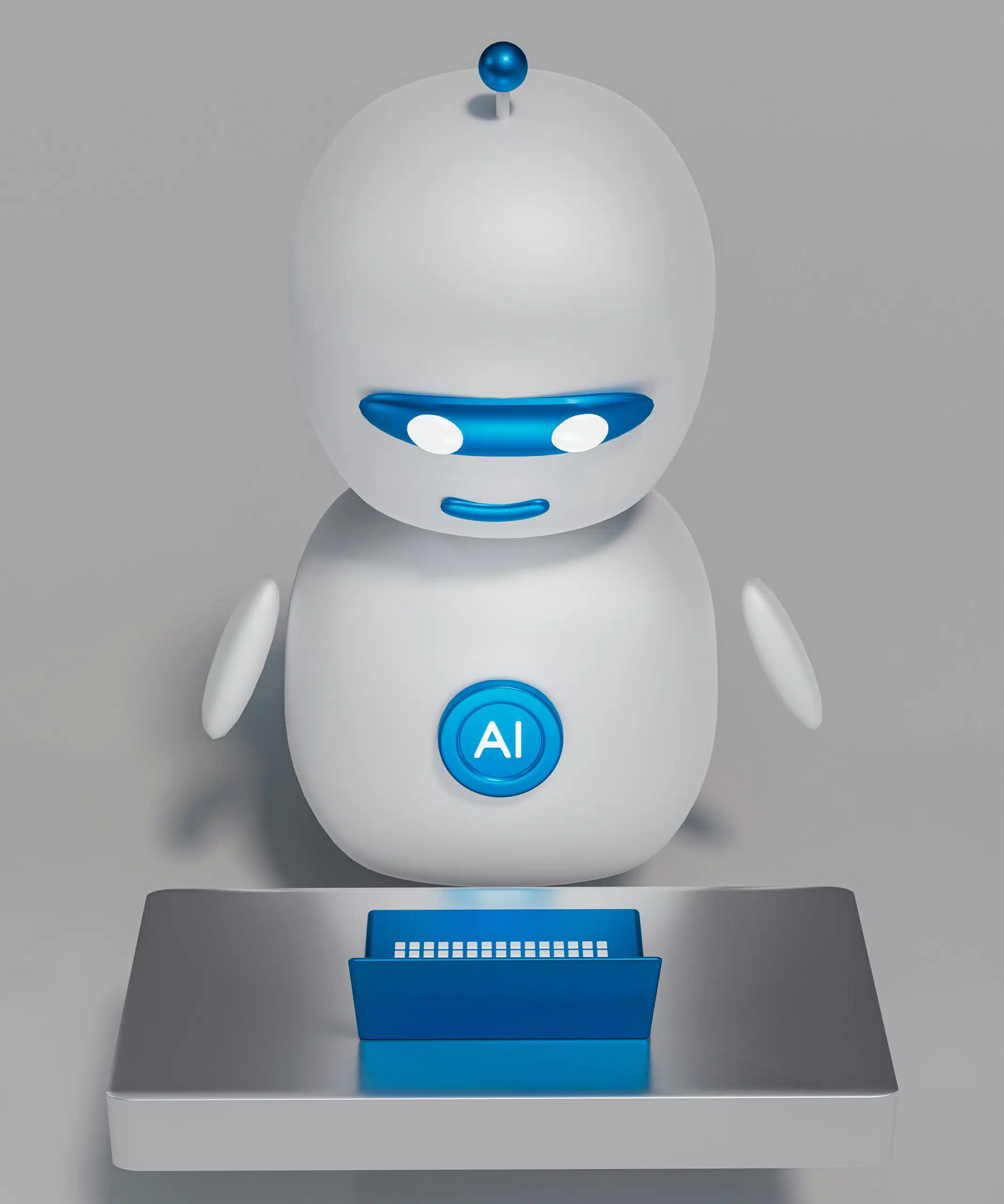Are you struggling to find the right AI chatbot integration tools to enhance your customer interactions? Choosing the best fit can be challenging with numerous options and alternatives. This post will explore popular AI chatbot integration tools, review alternatives, and provide steps for successful integration into your business operations. By the end, readers will gain clarity on selecting the most suitable solution for their needs, ultimately improving efficiency and customer satisfaction.
Key Takeaways
- AI chatbots enhance customer engagement and automate interactions for better satisfaction
- Effective integration with existing systems improves efficiency and response accuracy
- Personalization and sentiment analysis are key for understanding customer needs
- Regular performance evaluation helps optimize chatbot effectiveness and user experience
- Exploring alternative solutions can address specific business engagement challenges
Understanding AI Chatbot Integration Tools

AI chatbot integration tools enhance customer engagement using artificial intelligence, natural language processing, and language models. When evaluating these tools, it’s essential to consider features like natural language understanding to ensure effective conversations. The following sections will discuss the significance of integration and provide insights into selecting the ideal tools versus their alternatives.
Defining AI Chatbot Integration Tools
AI chatbot integration tools are designed to increase customer engagement through automation and advanced features like speech recognition. These tools facilitate effective communication by linking chatbots with various databases, allowing them to pull relevant information during conversations. Whether accessed via a web browser or a dedicated app, the right chatbot integration tools can transform interactions, making them seamless and responsive to user needs.
Importance of Integration in Customer Engagement
Integrating AI chatbots into customer engagement strategies is vital for customer satisfaction and lead generation. By connecting these chatbots to a content management system, businesses enable automated responses that provide clients with quick access to relevant information. This seamless interaction not only streamlines communication but also helps in nurturing relationships, ultimately leading to increased customer loyalty and engagement:
| Key Benefits | Description |
|---|---|
| Enhanced Customer Satisfaction | Provides quick, accurate responses to client inquiries. |
| Improved Lead Generation | Automates the process of capturing and qualifying leads. |
| Streamlined Communication | Links chatbot functionality with existing content management systems. |
Key Features to Look for in Integration Tools
Users should prioritize features that enhance user experience and streamline workflows when selecting AI chatbot integration tools. Key aspects to examine include the ability to link with existing systems for managing documents and policies, which allows chatbots to provide accurate information swiftly. Additionally, understanding the billing structure—whether billed annually or monthly—can impact a business’s budgeting and overall strategy for chatbot implementation.
Top AI Chatbot Integration Tools Available Today

This section overviews leading AI chatbot integration tools, focusing on their features, pricing analysis, user reviews, and ratings. Readers will learn how different options compare regarding onboarding capabilities, customer support efficiency, and overall return on investment. By examining these factors, businesses can decide which tools best fit their needs.
Overview of Leading Options
Choosing the right AI chatbot integration tools requires thoroughly examining various options, each offering unique features tailored to different business needs. For instance, some tools excel in parsing natural language, providing advanced analytics to track user behavior and refine interactions. By effectively leveraging these resources, businesses can create a robust decision tree that enhances knowledge sharing and improves customer experiences:
- Natural Language Processing for effective communication
- Advanced analytics for user behavior tracking
- Seamless integration with existing systems
- Customizable decision trees for tailored responses
- Robust knowledge management capabilities
Detailed Comparison of Features
When comparing features among AI chatbot integration tools, efficiency is a primary factor to consider, particularly for businesses seeking to enhance customer support chatbots. Tools incorporating natural language processing can significantly improve interactions by ensuring clarity and responsiveness. Additionally, integration with platforms like Google Assistant can streamline handover processes during customer inquiries, leading to a smoother transition when human intervention is required.
| Feature | Description |
|---|---|
| Efficiency | Improves response times and accuracy in customer inquiries. |
| Customer Support Chatbots | Automated systems designed to assist customers with inquiries. |
| Google Assistant Integration | Facilitates smooth user interaction and handover processes. |
| User-Friendly Interface | Simple design that enhances the user experience. |
| Customization | Allows brands to tailor chatbot responses according to their unique needs. |
Pricing Analysis Across Various Tools
The pricing of AI chatbot integration tools varies significantly, depending on factors like features and deployment options. For businesses interested in open source solutions, there are often lower upfront costs, accompanied by the flexibility of machine learning capabilities. However, commercial options, such as LivePerson and LiveChat, may offer advanced features like real-time analytics and dedicated customer support, which can justify their higher price points.
- Open source options provide budget-friendly solutions with flexibility.
- Commercial tools like LivePerson offer robust features and support.
- Machine learning capabilities enhance performance and customer interactions.
- Pricing varies based on functionalities and deployment choices.
User Reviews and Ratings
User reviews and ratings provide valuable insights into the effectiveness of AI chatbot integration tools, helping businesses make informed choices that enhance customer experience. Feedback often highlights how well these tools integrate with existing systems and their ability to improve response times, ultimately influencing customer satisfaction and driving sales. Evaluating user experiences can assist in understanding the curve of benefits and challenges associated with each tool, ensuring a better alignment with business needs:
- Understanding customer experiences through ratings.
- Insights into response effectiveness and integration.
- Comparisons that showcase performance and pricing.
Exploring Alternatives to Traditional AI Chatbot Integration Tools

Exploring alternatives to traditional AI chatbot integration tools can yield numerous benefits for organizations aiming for enhanced customer engagement. These options should be considered when seeking improved personalization or when current solutions fail to meet specific organizational needs. This section will present case studies showcasing successful alternative implementations, demonstrating how these choices can effectively serve the target audience.
Benefits of Alternative Solutions
Alternative solutions to traditional AI chatbot integration tools can significantly enhance customer interactions using advanced machine learning techniques. By incorporating anthropic designs, these systems can better understand natural language, tailoring responses based on user behavior and preferences. This adaptability allows businesses to build a more comprehensive knowledge base that evolves with customer inquiries, improving satisfaction and engagement.
When to Consider Alternatives
Organizations should consider alternatives to traditional AI chatbot integration tools when facing challenges related to complexity, scalability, or steep learning curves. For instance, if a business finds that existing solutions do not adapt well to their growing needs, exploring options like Google One can provide more flexibility and integration capabilities. Companies can identify when a shift is necessary to enhance engagement and improve overall customer experience by assessing the effectiveness of their current chatbot systems and how they serve customer interactions.
Evaluating Your Business Needs for AI Chatbot Integration

Assessing current systems and infrastructure is essential for businesses considering AI chatbot integration tools. Identifying specific use cases and goals helps to tailor solutions that fit organizational needs. Additionally, tracking key metrics for success, such as customer dialogue effectiveness and overall system efficiency, informs decisions about pricing and scalability within the broader ecosystem, ensuring the right fit for enhanced engagement.
Assessing Your Current Systems and Infrastructure
Assessing the current systems and infrastructure is a vital step for businesses looking to implement AI chatbot integration tools. It is important to evaluate existing user interfaces and ensure that they support instant messaging capabilities, enhancing usability for end users. Businesses should consider how well the current CSS frameworks integrate with potential chatbot solutions, facilitating a cohesive experience that aligns with organizational needs:
- Evaluate existing user interfaces for compatibility.
- Assess instant messaging capabilities to enhance user engagement.
- Consider CSS framework integration for a seamless experience.
- Ensure usability is prioritized for end users.
Identifying Specific Use Cases and Goals
Identifying specific use cases and goals is essential for effectively implementing AI chatbot integration tools. Businesses should assess how they can leverage these tools for data management, enhancing customer service, or improving interactions on social media. For example, a company might focus on deploying a large language model chatbot within their mobile app to streamline user inquiries and boost satisfaction by providing instant responses tailored to customer needs.
Key Metrics for Success in Implementation
Key metrics for success in implementing AI chatbot integration tools revolve around understanding user interactions across various channels. For example, leveraging platforms like IBM Watson can facilitate an omnichannel experience, enabling businesses to monitor engagement metrics effectively. By focusing on hybrid approaches, organizations can ensure that both automated systems and human support provide timely attention to customer inquiries, enhancing overall satisfaction and performance.
Steps to Successfully Integrate AI Chatbots Into Your Operations

Aligning with team members and stakeholders is essential for successful AI chatbot integration. Strategic planning helps identify how the virtual assistant will fit into the existing infrastructure and enhance the marketing strategy. Testing and optimization techniques ensure the chatbot performs effectively, addressing user needs and improving overall engagement.
Aligning With Your Team and Stakeholders
Aligning with team members and stakeholders is essential in the process of integrating AI chatbots into business operations. Regular communication ensures everyone understands their role and the objectives of the chatbot, which can lead to a more effective implementation. For instance, involving marketing and customer support teams in the planning phase helps tailor the chatbot’s functions to meet specific customer needs:
- Identify key stakeholders involved in the integration.
- Establish clear communication channels for updates and feedback.
- Gather input from different departments to enhance chatbot functionality.
Strategic Planning for Integration
Strategic planning is essential when integrating AI chatbots into business operations to ensure they align with overall goals and enhance customer engagement. Clearly defining the intended purpose of the chatbot, whether for customer support or lead generation, helps in selecting the right tools or alternatives that fit these needs. By mapping out workflows and involving all relevant stakeholders, organizations can create a tailored approach that promotes seamless communication and efficient user interactions:
| Step | Description |
|---|---|
| Define Purpose | Establish the main role of the chatbot, such as supporting customers or generating leads. |
| Involve Stakeholders | Engage team members from marketing, support, and IT for comprehensive planning. |
| Map Workflows | Outline processes to ensure seamless integration and user experience. |
Testing and Optimization Techniques
Testing and optimization are crucial steps in successfully integrating AI chatbots into operations. Organizations should regularly evaluate chatbot performance by analyzing user interactions to ensure the tool meets customer needs effectively. For instance, testing different response options can help organizations determine which ones yield the best engagement rates, leading to improved satisfaction and better customer experiences:
- Regularly evaluate chatbot performance by analyzing user interactions.
- Test different response options to find the most effective ones.
- Adjust strategies based on insights gained from user feedback.
Future Trends in AI Chatbot Integration Tools

Innovative features are emerging in the field of AI chatbot integration tools, presenting exciting possibilities for businesses. Predictions suggest an evolution in functionalities, focusing on personalization and enhanced user experience. Preparing for these developments ensures organizations can capitalize on upcoming trends, improving customer interactions and streamlining operations effectively.
This section will explore specific innovations, anticipate market changes, and offer insights on how businesses can adapt to these advancements in AI chatbots.
Innovative Features on the Horizon
As technology progresses, AI chatbot integration tools are expected to incorporate innovative features that enhance user interactions. These advancements may include improved personalization through better understanding of individual user behavior and sentiment analysis, enabling chatbots to respond more accurately to customer needs. Adopting such features will streamline communication and create a more engaging user experience, which is paramount for businesses looking to boost customer loyalty.
| Innovative Feature | Description |
|---|---|
| Personalization | Enhanced understanding of user behavior for tailored interactions. |
| Sentiment Analysis | Ability to gauge customer emotions and adjust responses accordingly. |
| Advanced Natural Language Processing | Improved communication for clearer and more relevant responses. |
| Omnichannel Integration | Seamless engagement across various platforms and devices. |
Predictions for Market Evolution
The evolution of AI chatbot integration tools will significantly reshape customer engagement strategies. As businesses increasingly prioritize seamless communication, features such as advanced natural language processing and sentiment analysis will become standard. Companies must evaluate their current tools against emerging alternatives that offer enhanced personalization and integration capabilities, ensuring that they remain competitive and responsive to customer needs.
Preparing for Upcoming Developments in AI Chatbots
Preparing for upcoming developments in AI chatbots is essential for businesses looking to enhance customer engagement and streamline operations. As technology advances, integrating tools that support features like personalization and sentiment analysis will allow chatbots to better understand and respond to customer needs. Organizations must stay informed about these trends to ensure their chatbot strategies remain relevant and effective in meeting evolving market demands:
- Understanding the importance of personalization in chatbot interactions.
- Incorporating sentiment analysis for improved customer communication.
- Staying ahead of trends to maintain competitive advantage in AI chatbot integration.
Conclusion
Choosing the right AI chatbot integration tools is crucial for enhancing customer engagement and satisfaction. Evaluating features, pricing, and user reviews empowers businesses to identify solutions that best align with their needs. Alternatives also present viable options, offering unique benefits that may better suit specific organizational goals. Companies can significantly improve their customer interactions and drive overall success by making informed decisions.





